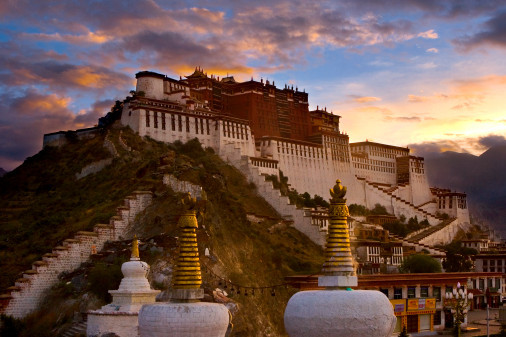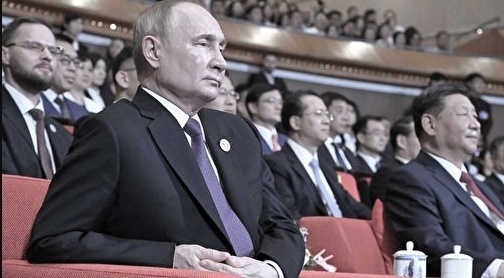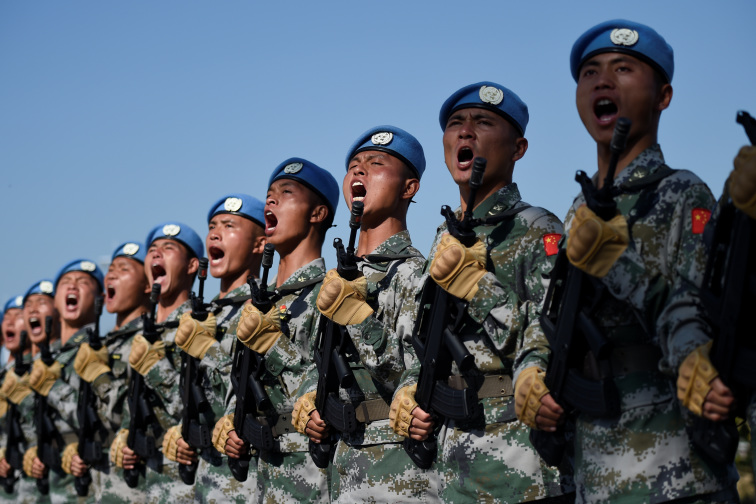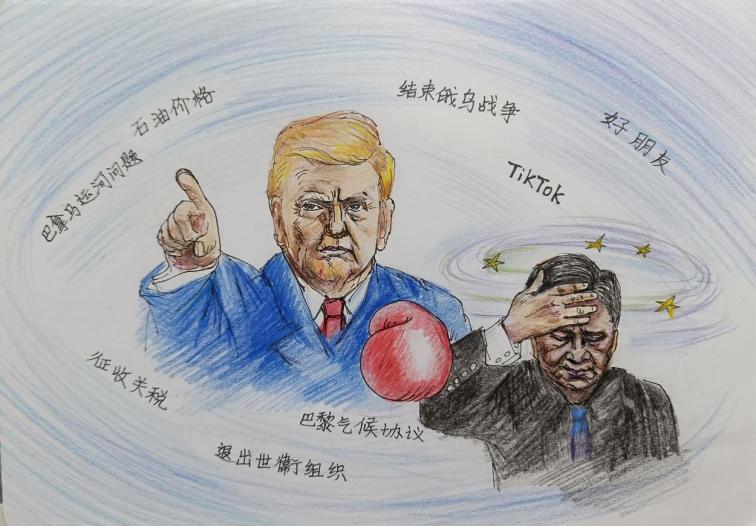The landmark of Lhasa — the Potala Palace.
[People News] According to Xinhua News Agency, at noon on August 20, CCP leader Xi Jinping led a central delegation to Lhasa to attend the 60th anniversary celebration of the founding of the Tibet Autonomous Region.
This is Xi Jinping’s first public appearance since the Beidaihe meetings. Each year, the Beidaihe gathering serves as a symbolic window for the outside world to observe the power struggles within the CCP’s top leadership. This year’s meeting was held before the Fourth Plenary Session of the 20th Central Committee, making it the last major round of contest before that political showdown. Speculation swirls: Will Xi still be able to hold the September 3rd military parade? Will he be forced to cede power at the Fourth Plenum? What kind of deals might have been struck between the anti-Xi camp and Xi Jinping? All of this remains a riddle of Zhongnanhai’s power configuration.
Meanwhile, online rumours are rampant, claiming Xi’s power is already a thing of the past, that he has been hospitalised at the 301 Military Hospital, and even more sensational claims: that Yang Lanlan is Xi’s illegitimate daughter, that Xi embezzled 2 trillion yuan of military funds, and that he shared mistresses with political rivals. Such stories are likely tailored by the anti-Xi camp as part of an opinion and information warfare campaign, designed to shake his position further and destroy his carefully constructed image as a leader.
Although Xi Jinping is mired in layers of crises, he continues to seize every opportunity to assert his presence in a high-profile manner.
According to Xinhua, at around 12:00 on August 20, Xi’s special plane landed at Gonggar Airport, where Tibetans of various ethnic groups were waiting on the tarmac with warm applause. Xi walked out of the cabin door and waved to the crowd. CCTV footage showed crowds lining the roads, welcoming his motorcade with a grand spectacle. One wonders how much public money was squandered on this political show.
Xinhua reported that those accompanying Xi to Tibet included Politburo Standing Committee members Wang Huning and Cai Qi; Politburo member and United Front Work Department head Li Ganjie; Politburo member and Vice Premier Zhang Guoqing; NPC Standing Committee Vice Chairman Losang Jamcan; CPPCC Vice Chairman Hu Chunhua; Central Military Commission (CMC) member Zhang Shengmin; Politburo member and Vice Premier He Lifeng; and Secretary of the Secretariat and State Councillor Wang Xiaohong.
That Cai Qi and Wang Xiaohong, Xi’s chief of staff and bodyguard-in-chief, accompanied him is unsurprising. Since the 20th Party Congress, He Lifeng has also become a standard “tag-along” whenever Xi travels abroad.
The presence of Zhang Guoqing, however, is more intriguing. Recent rumours suggest that during the Beidaihe struggle, Zhang emerged as the most unexpected dark horse, poised to become the No. 3 man in Zhongnanhai’s inner circle at the 21st Party Congress—not only entering the Politburo Standing Committee but also taking over as NPC Chairman. Zhang Guoqing’s résumé combines central SOE, military-industrial, and local government credentials, making him a rising star. According to exiled Inner Mongolian official Du Wen, Zhang gained Xi’s trust in 2017 while serving as Chongqing mayor, when he reported on Sun Zhengcai. For this, Xi promoted him, and by the 20th Party Congress, he was elected to the Politburo and became a vice-premier. In the State Council, he oversees industrial safety, industry and IT, state assets supervision, and market regulation—matters unrelated to Tibet. His joining Xi on this Tibet trip is therefore quite telling, and his political trajectory warrants close attention.
Li Ganjie’s presence as United Front chief is nominally justifiable. But in official reports, Li is designated as deputy head of the Tibet delegation and his name was placed between top-ranking figures Wang Huning/Cai Qi and He Lifeng/Zhang Guoqing/Wang Xiaohong. Earlier this year, in April, Li was demoted from Organisation Department head (the CCP’s nerve centre) to United Front chief. Rumours linked his wife to shady deals with disgraced Shanxi governor Jin Xiangjun. As a Tsinghua alumnus and Xi ally, Li became a target for the anti-Xi faction. His joining Xi in Tibet now looks more like symbolic consolation than real influence.
What deserves the most attention are CPPCC Vice Chairman Hu Chunhua and CMC member Zhang Shengmin—two pillars of the anti-Xi camp—who also accompanied Xi to Tibet. The political signal here is far from ordinary.
When Xi visited Tibet on July 23, 2021, for the 70th anniversary of “Tibet’s Peaceful Liberation,” he was still in a power-ascending phase. At that time, he was accompanied by top loyalists such as Ding Xuexiang, Liu He, Yang Xiaodu, CMC Vice Chairman Zhang Youxia, CMC Office Director Zhong Shaojun, Organisation Department chief Chen Xi, and NDRC head He Lifeng.
Back then, the CPPCC had no role in such events. Now, however, Hu Chunhua—a sidelined “crown prince” who didn’t even retain a Politburo seat, merely a CPPCC vice chair—accompanies Xi to Tibet. This is not only unusual but highly sensitive. Tibet, though remote and ethnically diverse, holds significant political weight: it has long been a power base for the Communist Youth League (tuanpai). Both Hu Jintao and Hu Chunhua advanced through Tibet. At the 20th Party Congress, Xi annihilated the tuanpai. But after the Third Plenum, Xi’s power weakened, and the tuanpai resurged from the ashes. As the once-designated successor, Hu Chunhua’s reemergence is a sign of political counterbalance. Before Beidaihe, rumours spread that Wang Yang and Hu Chunhua might team up to replace Xi. During the Beidaihe session, further reports claimed that the outcome had already been decided: Xi was powerless, Ding Xuexiang would become General Secretary, Zhang Youxia would take over the CMC, and Hu Chunhua would enter the Politburo as First Vice Premier. In essence, Hu’s political fate has become directly tied to Xi’s in a zero-sum gamble: if Xi rises, Hu falls; if Hu rises, Xi falls.
As head of the CMC Discipline Inspection Commission, Zhang Shengmin is a staunch ally of Zhang Youxia and rarely appears publicly. Back in 2021, it was Zhang Youxia who accompanied Xi to Tibet as CMC vice chairman. On August 20 this year, it should logically have been He Weidong by Xi’s side—but He was already purged by Zhang Youxia. If Xi truly controlled the military, it would be Zhang Youxia himself accompanying. Instead, Zhang Youxia has vanished, leaving Zhang Shengmin—the military’s “executioner,” purging Xi’s allies—to appear. This is less “escort” than “supervision and intimidation.”
Recently, the PLA Daily carried an unusual editorial demanding the army “purge residual toxins,” a veiled attack at He Weidong, Miao Hua, and their patron Xi Jinping. Rumours also suggest that princeling general Liu Yuan has allied with Zhang Youxia to challenge Xi. Just before Beidaihe, veteran journalist Gao Yu revealed that Liu Yuan had left Beijing to implement Zhang Youxia’s nationwide orders. Soon after, Liu appeared prominently at the PLA Day banquet, seated at a conspicuous round table. This year, Xi conspicuously skipped the usual military rank conferment ceremony on Army Day. Ten active generals were absent, while many retired officers gathered instead. The structure of military power is clearly shifting away from Xi.
Thus, Xi’s high-profile trip to Tibet immediately after Beidaihe may have been intended to demonstrate authority. But the composition of his entourage shows his power system has already been disrupted and restructured. This suggests that at Beidaihe, Xi and the anti-Xi faction may have reached some undisclosed compromise. For the sake of “saving the Party,” Xi may be allowed to maintain a superficial façade of power until the 21st Congress. But who ultimately prevails will become clearer after the Fourth Plenum.
(First published by People News) △











News magazine bootstrap themes!
I like this themes, fast loading and look profesional
Thank you Carlos!
You're welcome!
Please support me with give positive rating!
Yes Sure!